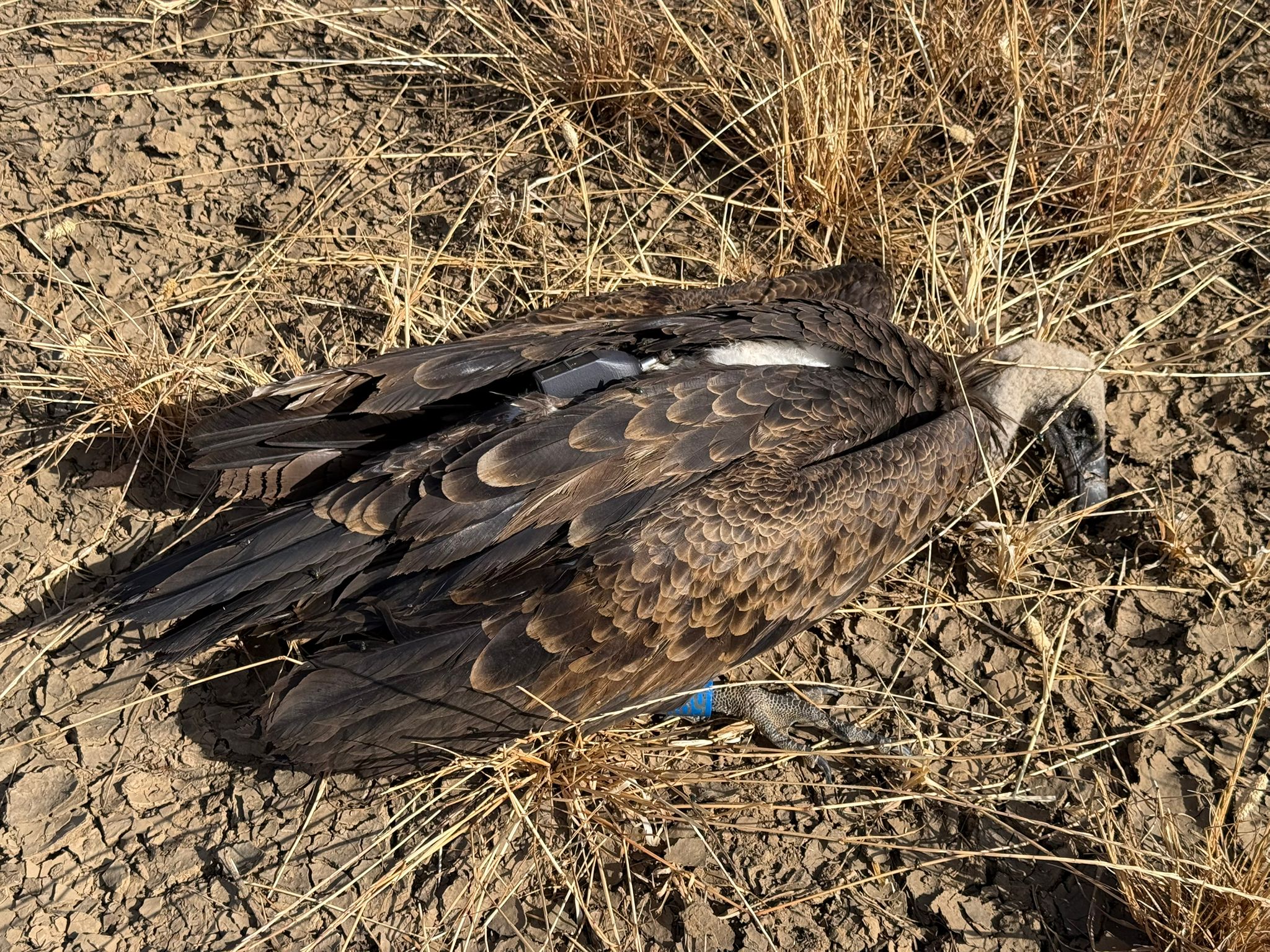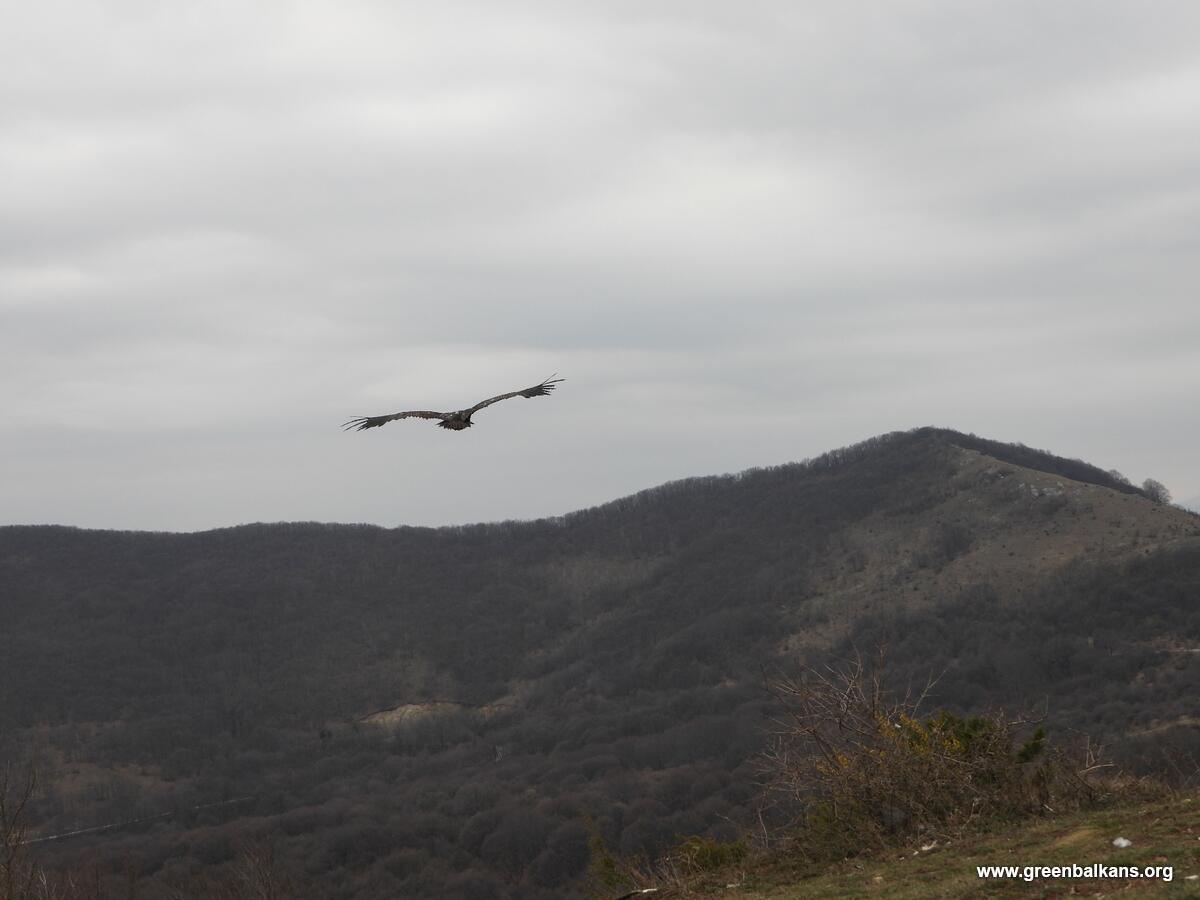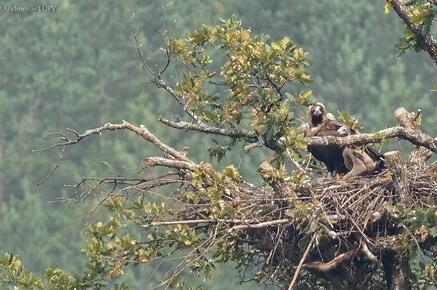The four-year-old Cinereous Vulture Tewes keeps surprising scientists and nature enthusiasts with her flying adventures. Hatched in 2020 in Spain and donated to Bulgaria by the Junta de Extremadura (Regional Government of Extremadura) as part of a reintroduction programme, she was released into the wild in June 2022. For the second time in two years, she has been photographed in the Natural Regional Reserve of Cornino Lake in Italy, following her journey around Europe after she left the Balkan Mountains.

A wandering adventurer
Tewes, named after our colleague and Cinereous Vulture expert Evelyn Tewes, is a four-year-old female Cinereous Vulture (Aegypius monachus). She hatched in Spain and released in Bulgaria following a collaboration between Junta de Extremadura, AMUS and the Vulture Conservation Foundation as part of a long-term reintroduction programme. These conservation efforts aim to bring her species back to the Balkan Mountains, where Cinereous Vultures went extinct in the 1980s. The reintroduction efforts began in 2018 with releases in the Eastern Balkan Mountains near Kotel within the Vultures Back to LIFE (2015-2022) programme and continue today thanks to the Bearded Vulture LIFE (2023-2030) project, counting the small but significant number of 20 nesting pairs in 2023.
After her release in Dolno Ozirovo in the Balkan Mountains in the early summer of 2022, Tewes did not settle for long. Less than a year later, in fact, she embarked on her first exploration of Europe. She initially headed northeast, getting as far as Ukraine, then west to the Dinara mountains in Croatia and crossed the border to Italy where she was spotted in the Natural Regional Reserve of Cornino Lake for the first time.


Her journey provided significant data for scientists tracking her movements via satellite transmitters. Her route from the Balkan Mountains to the Alps is known to be used by other bird species, including Griffon Vultures, which spend the winter months south in the Balkans and move back north to the Alps during summertime.
The European grand tour

Scientists and birdwatchers have closely followed Tewes in her nearly two years of wandering. Since her first flight away from the release site she visited Serbia, Greece, Albania, North Macedonia, Romania, Hungary, Croatia, Switzerland, Slovenia and Italy, making a real Grand Tour of Europe.
She has been recently spotted again in the Natural Regional Reserve of Cornino Lake in Italy, one year after her first visit. The reserve is a hot spot for big soaring birds, especially Griffon Vultures since it is placed along the important natural corridor that connects the Alps to the Balkan Mountains. Tewes’ journey highlighted once again the importance of natural corridors and protected areas for the movement of endangered species across Europe, and the importance of transnational cooperation in conservation projects.
The conservation efforts
The reintroduction of endangered species individuals is only one of the many efforts scientists and institutions are putting together in order to see these species come back to their original natural habitats. Conservation efforts target a long list of threats to the survival or the comeback of endangered wildlife.
For Cinereous Vultures the critically low number of individuals is undoubtedly the first threat in line. As for all the other European vulture species, the list of threats continues with electrocution, unintentional poisoning, loss of habitat and insufficient food availability.
To mitigate these risks, it is vital to support continued collaboration between scientists and governments and between neighbouring countries. The conservation actions to bring back Cinereous Vultures in the Balkan Mountains, initially focused on mitigating threats like poisoning, electrocution and collisions ahead of introducing birds as it’s important to avoid mortalities of released vultures. Other important actions like improving food bases and nesting habitat availability, had positive effects also on other species like Griffon Vultures, emphasizing how strongly interrelated conservation actions can be and their extensive impact on the ecosystem.
The Bearded Vulture LIFE Project

The “Bearded Vulture LIFE” project is a comprehensive initiative, aiming to restore the Bearded Vulture and Cinereous Vulture across Bulgaria and the Balkans. With a budget of €5.17 million, co-funded by the European Union’s LIFE Programme, the project commenced in August 2023 and is expected to continue until 2030. Building upon the achievements of its predecessor, “Vultures Back to Life,” it is coordinated by Green Balkans, with five more partner organizations within Bulgaria, including the Fund for Wild Flora and Fauna, Foundation EkoObshtnost, EVN – Elektropradelenie Yug EAD, Severozapadno Darzhavno Predpriyatie – Vratsa, and “Sinite kamani” Nature Park Directorate. Furthermore, the project benefits from international collaboration, including the Vulture Conservation Foundation (VCF), responsible for the translocation and safeguarding of captive-bred birds secured for release. Additionally, the partner Milvus group is responsible for executing conservation efforts in Romania.




